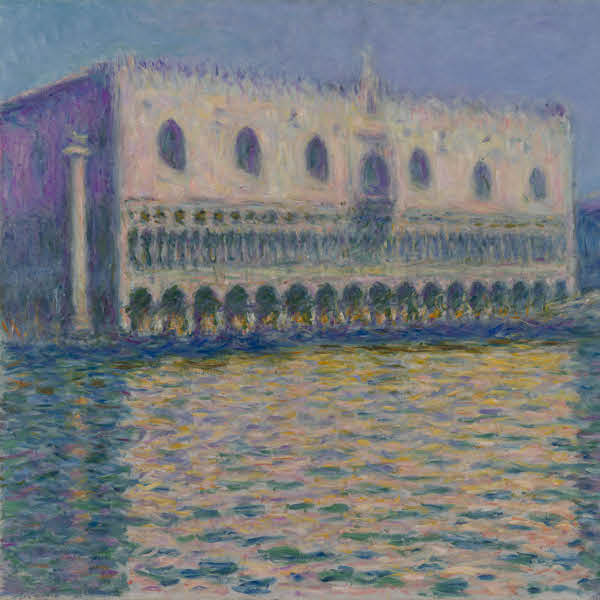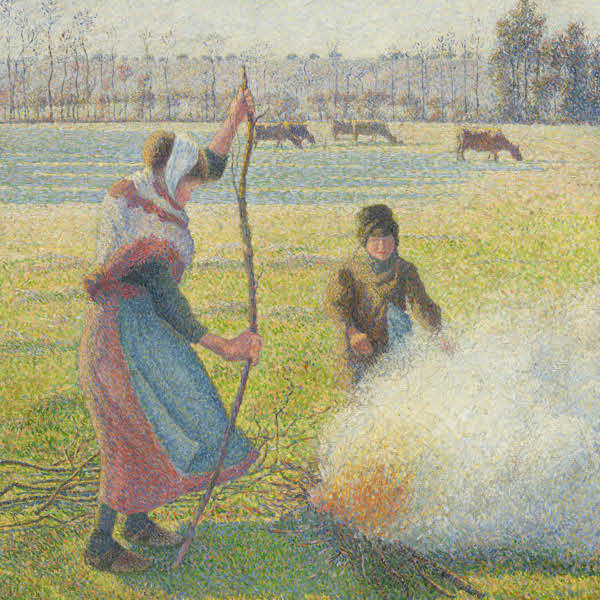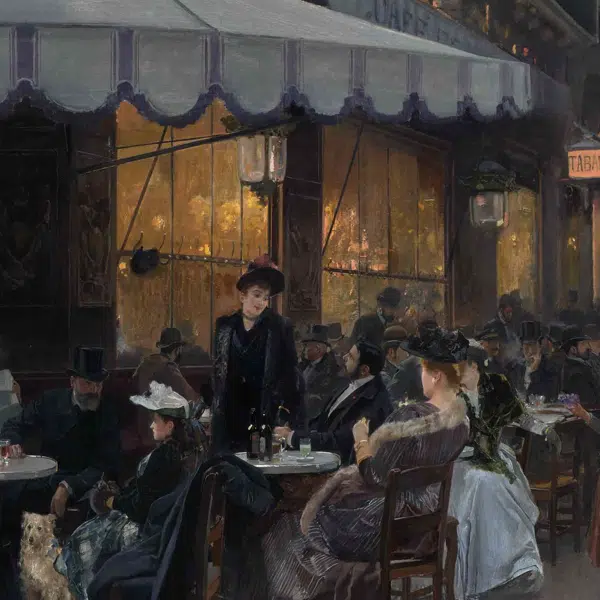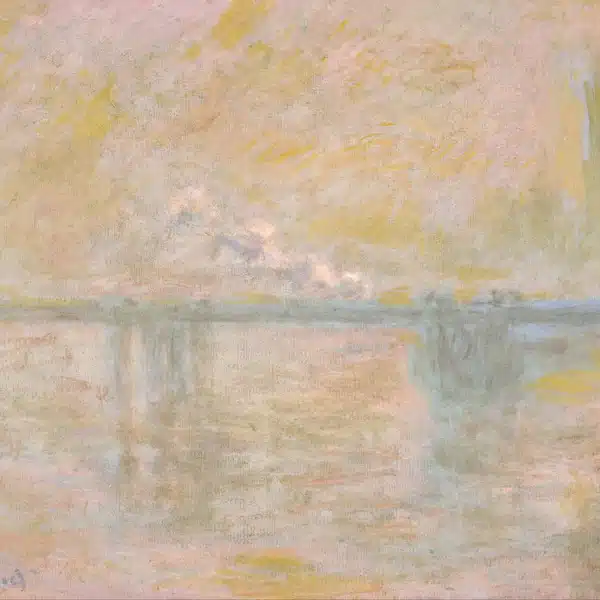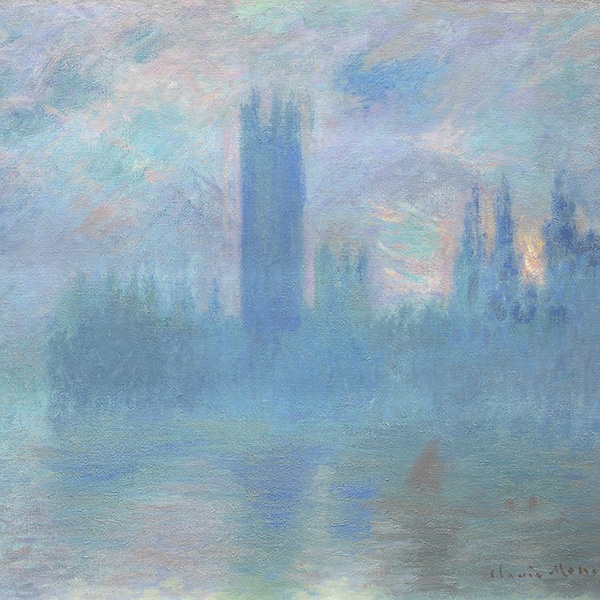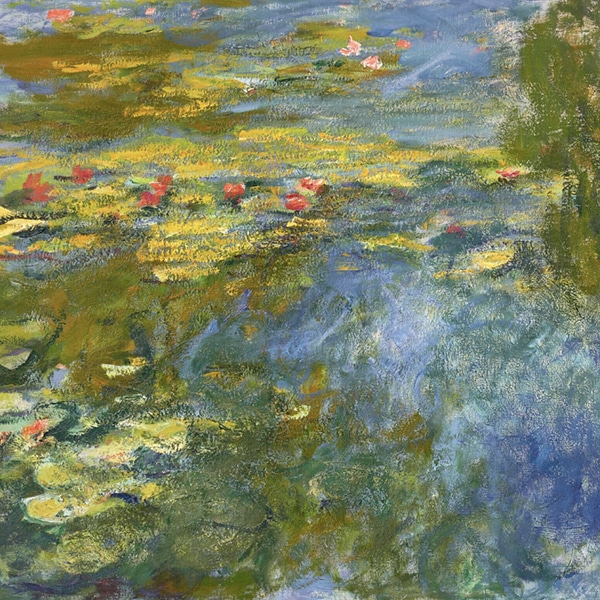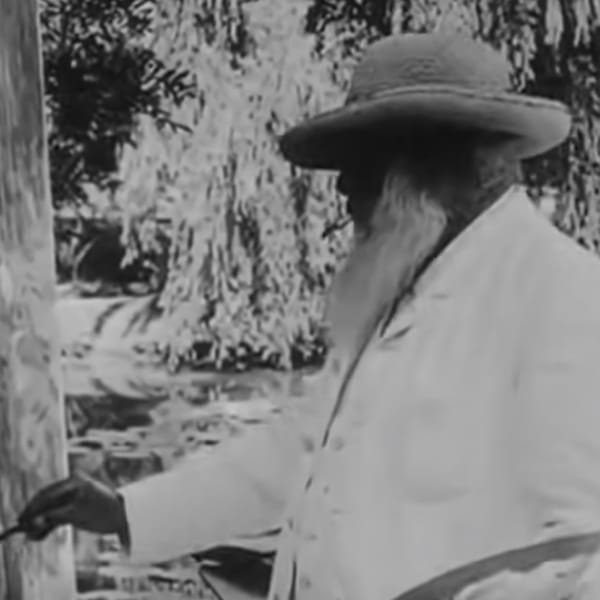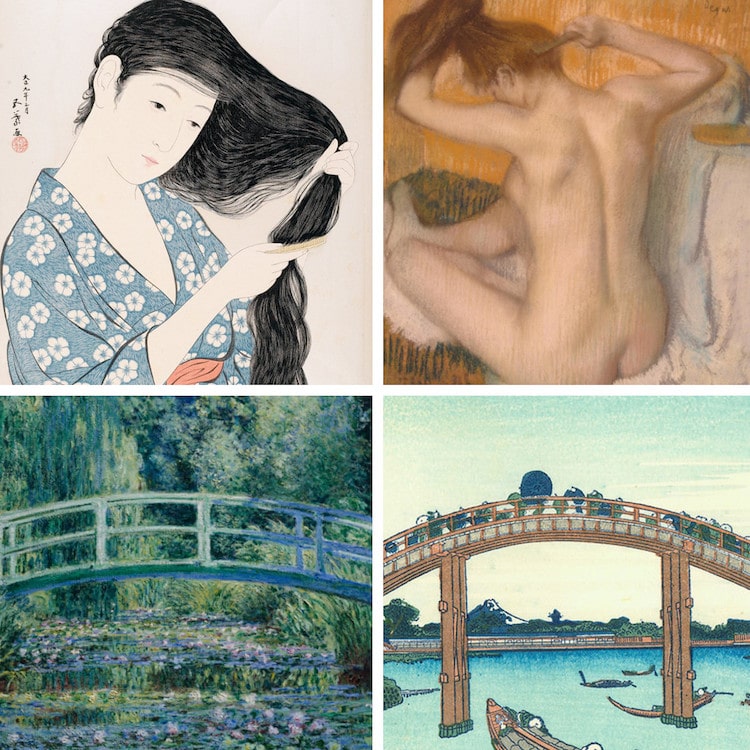
Widely known as the first modern art movement, Impressionism remains one of the most popular and prevalent forms of art today. While much of the groundbreaking genre was impressively original, Impressionists, like most artists, found inspiration in other forms of art—namely, in Japanese woodblock prints.
Here, we explore the ways in which Ukiyo-e, or “pictures of the floating world,” inspired the Impressionists in terms of content, style, and approach, culminating in a creative and timelessly artistic relationship.
What is Japonisme?
Japonisme is a word used to describe the study of Japanese art and, more specifically, its influence on European works. While the phenomenon is present in a range of movements—including Art Nouveau and Post-Impressionism—it is most closely associated with Impressionism, as artists like Claude Monet and Edgar Degas were particularly inspired by the subject matter, perspective, and composition of Japanese woodblock prints.
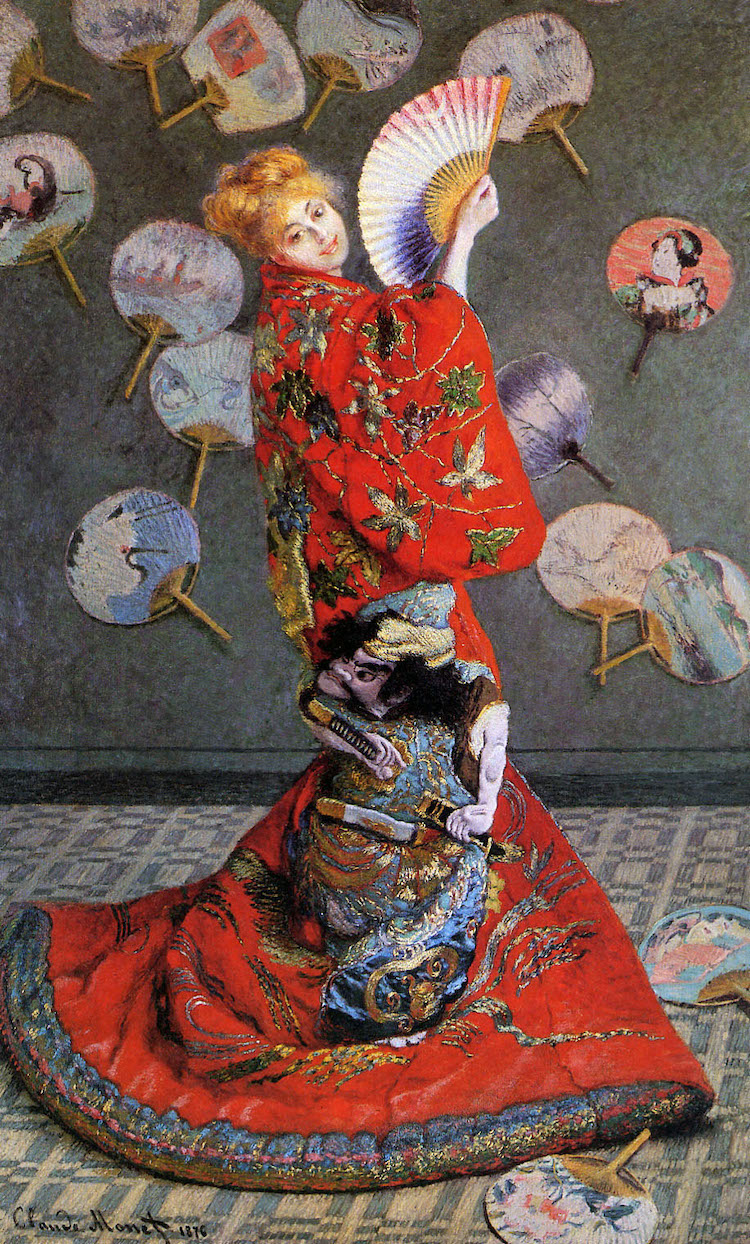
Claude Monet, “Camille Monet in Japanese Costume,” 1875 (Photo: Wikimedia Commons, Public domain)
History of Japonisme
In 1874, the same year that Impressionism officially emerged with Claude Monet's painting, Impression, Sunrise, French collector and critic Philippe Burty coined the term Japonisme. While, today, the term refers to all Japanese art forms' influence on any art movement, it is usually used to describe woodblock prints' prominent role in Impressionism.
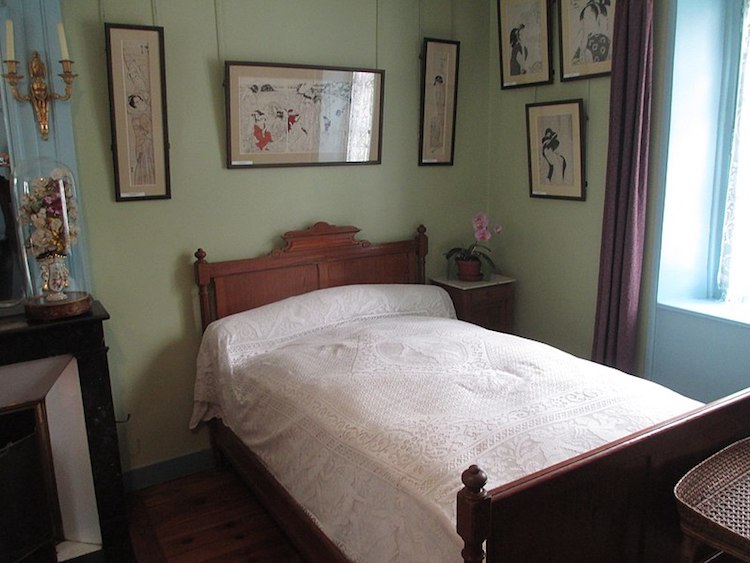
Monet's collection of Ukiyo-e prints at his home in Giverny, France (Photo: Dr. Avishai Teicher via Wikimedia Commons, CC BY-SA 4.0)
Though Ukiyo-e prints had only recently made their way into Western consciousness a few decades earlier, they were already extraordinarily popular with European artists and art lovers alike. Claude Monet, for example, had amassed an impressive collection of woodblock prints, most of which still hangs in his Giverny home today.
Given their admiration for Ukiyo-e prints, it is no surprise that Impressionist artists incorporated elements of the art form into their own work.
Japanese Influence on Impressionism
Everyday Subject Matter
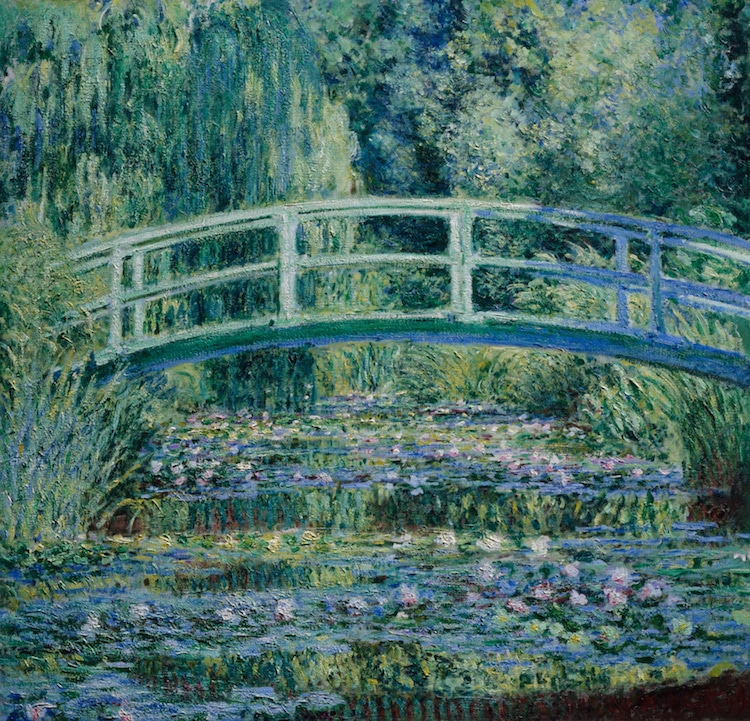
Claude Monet, “Water Lilies and Japanese Bridge,” 1899 (Photo: Princeton University Art Museum via Wikimedia Commons, Public domain)
Impressionist artists are known for their distinctive subject matter, including everyday scenes like depictions of nature and candid portraits. While this approach is quintessentially characteristic of the movement, it actually has roots in Japanese prints.
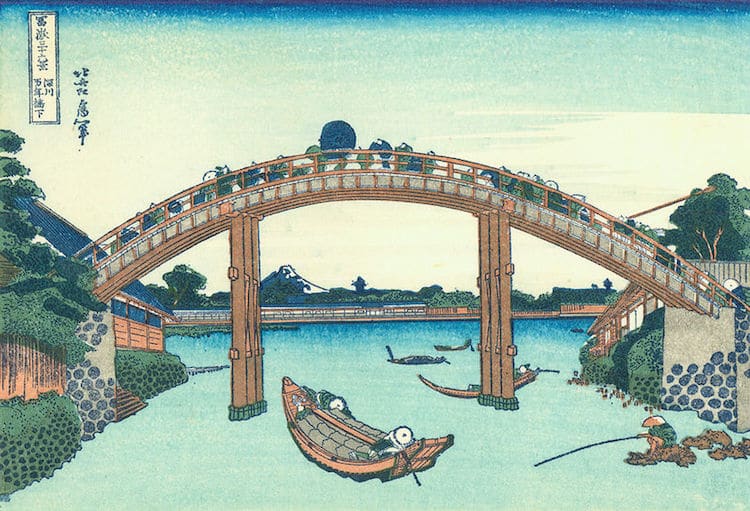
Hokusai, “Under Mannen Bridge at Fukagawa,” 1823 (Photo: Wikimedia Commons, Public domain)
Tell-tale title aside, Monet's iconic collection of Japanese Bridge depictions clearly references Ukiyo-e scenes of everyday life, while Edgar Degas‘ signature series of women at la toilette is undoubtedly inspired by the voyeuristic depictions of bathing women frequently found in Japanese prints.
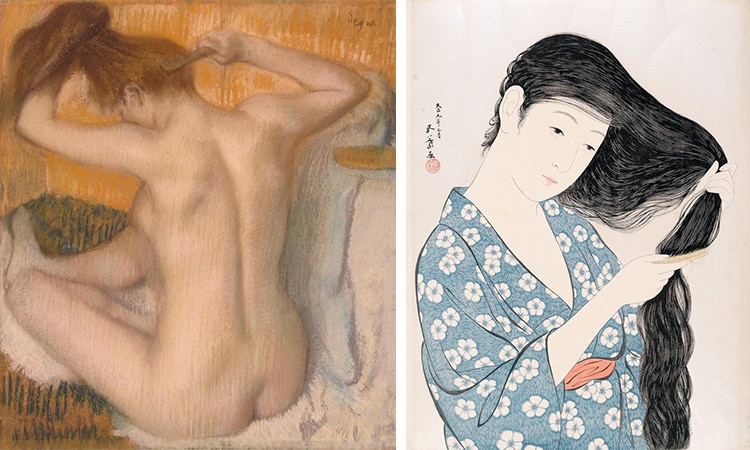
Left: Edgar Degas, “Woman Combing her Hair,” 1885 (Photo: Hermitage via Wikimedia Commons, Public domain)
Right: Hashiguchi Goyo, “Combing Hair,” 1920 (Photo: Wikimedia Commons, Public domain)
Unique Perspective
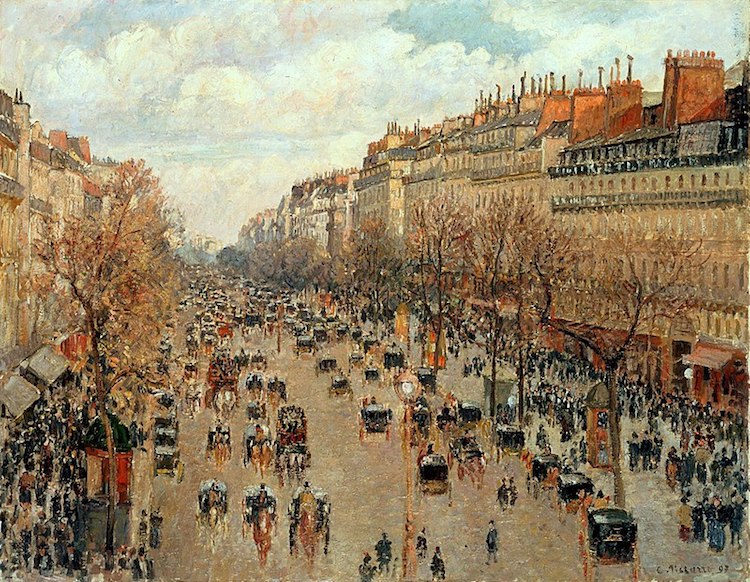
Camille Pissarro, “Boulevard Montmartre,” 1897 (Photo: Hermitage via Wikimedia Commons, Public domain)
In addition to sharing similar subject matter, Impressionist paintings and Japanese woodblock prints also showcase a unique approach to perspective. Often, the viewer's vantage point is from above and positioned at a slight angle.
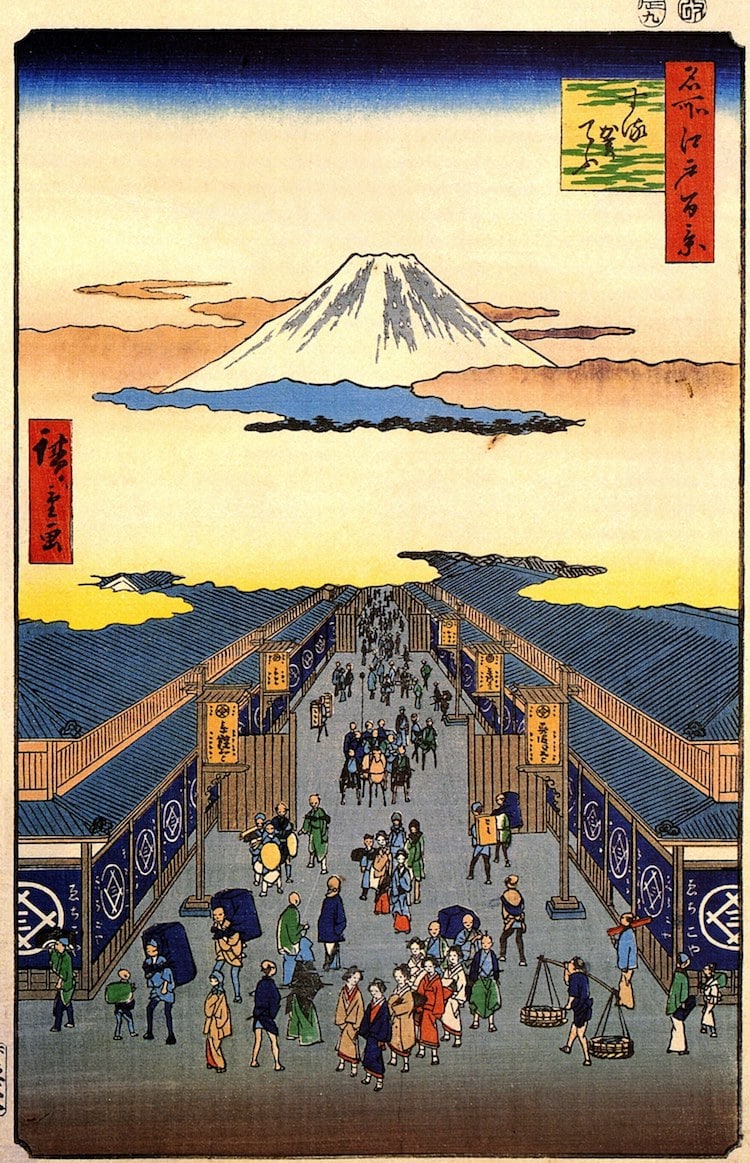
Hiroshige, “Sugura street,” 1836 (Photo: Visipix via Wikimedia Commons, Public domain)
This allows us to see scenes in their entirety, almost as if they are set on a theatrical stage and we are observing from the audience.
Other examples feature asymmetrical perspectives and strong diagonal lines.
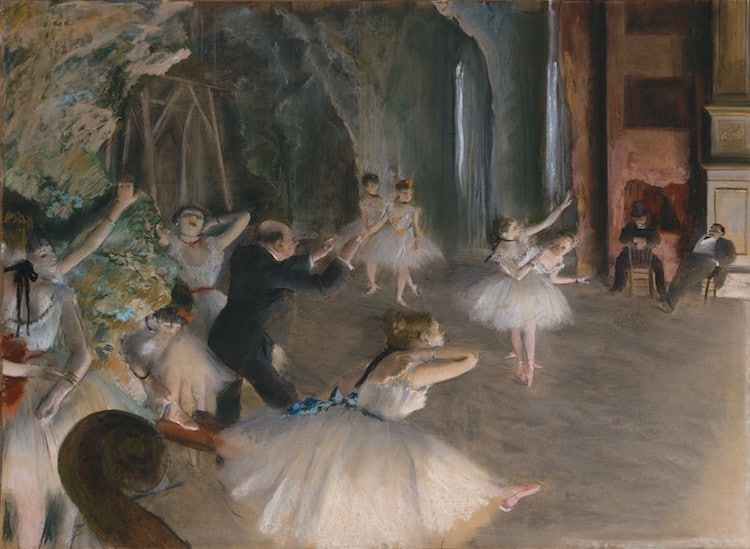
Edgar Degas, “The Rehearsal Onstage,” 1874 (Photo: The Metropolitan Museum of Art via Wikimedia Commons, Public domain)
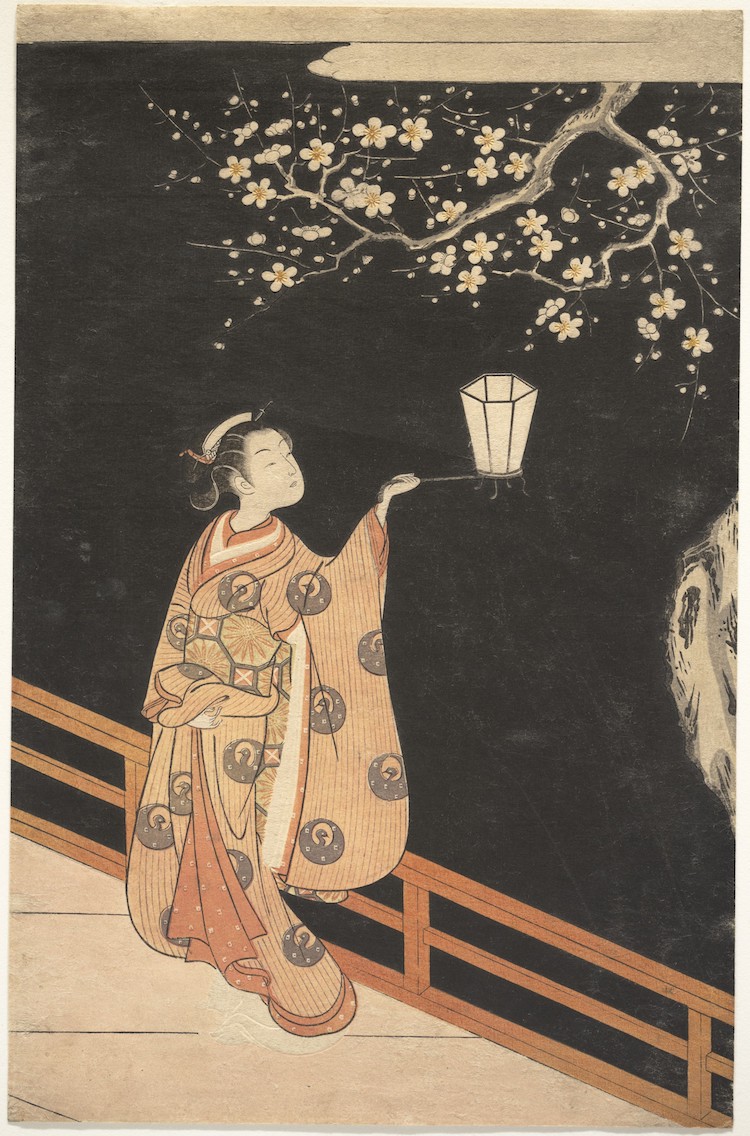
Suzuki Harunobu, “Woman Admiring Plum Blossoms at Night,” c. 18th century (Photo: The Metropolitan Museum of Art via Wikimedia Commons, Public domain)
Flat Compositions
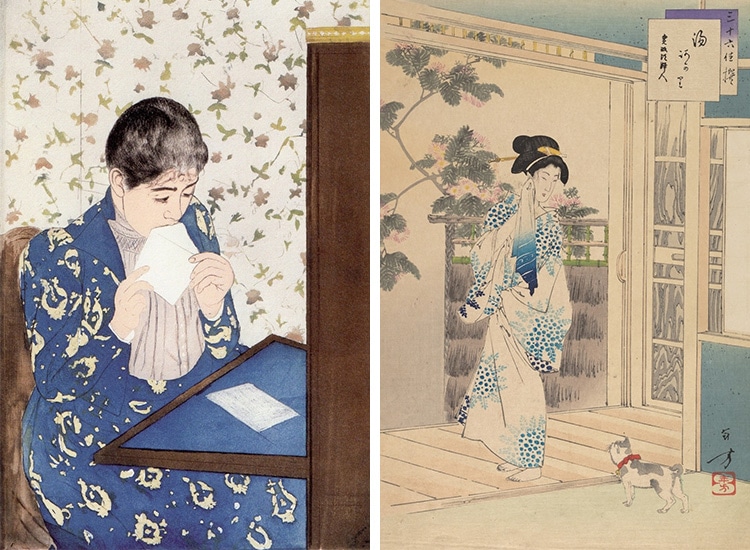
Left: Mary Cassatt, “The Letter,” 1890–1891 (Photo: Kathleen via Wikimedia Commons, Public domain)
Right: Toshikata Mizuno, “After the Bath: Woman of the Kansei Era,” 1893 (Photo: The Metropolitan Museum of Art via Wikimedia Commons, Public domain)
While it seems like employing such a fascinating perspective would result in dimensionality, typically, woodblock prints' compositions are quite flat, with solid planes of color and bold lines taking precedence over realism. Though some Impressionist artists did not follow suit and instead opted for a sense of depth, some, like Mary Cassatt, embraced this aesthetic.
When combined with the similarities in subject matter and like-minded approach to perspective, this fascinating flat aesthetic perfectly captures the distinctive look and feel of Japanese woodblock prints.
Decorative Color
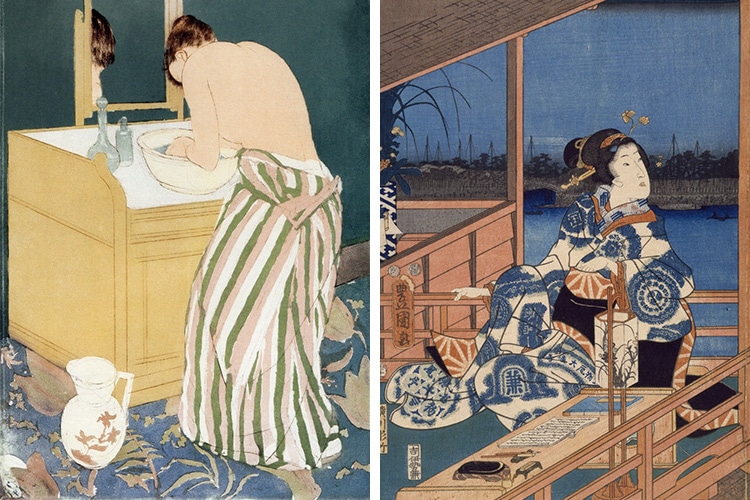
Left: Mary Cassatt, “Woman Bathing,” 1890–1891 (Photo: The Met via Wikimedia Commons via Wikimedia Commons, CC0 1.0 Public domain dedication)
Right: Utagawa Hiroshige, “Moonlight View of Tsukuba with Lady on a Balcony,” c. 1850–1856 (Photo: Brooklyn Museum via Wikimedia Commons, Public domain)
Another characteristic of art influenced by Japanese prints is brilliant color. Impressionist artists employed a decorative color palette in their compositions, oftentimes incorporating patterns and prints to enhance the visual appeal.
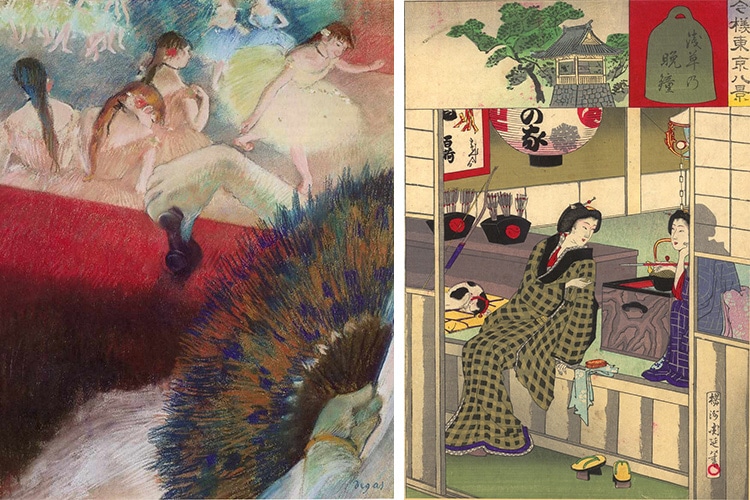
Left: Edgar Degas, “In the Theater,” c. 1880s (Photo: Wikimedia Commons via Wikimedia Commons, Public domain)
Right: Toyohara Chikanobu, “Evening Bell at Asakusa,” 1888 (Photo: Wikimedia Commons, Public domain)
This article has been edited and updated.
Related Articles:
Library of Congress Makes Over 2,500 Japanese Woodblock Prints Digitally Accessible
220,000+ Japanese Woodblock Prints Available Online in Growing Database
Origami: How the Ancient Art of Paper Folding Evolved Over Time and Continues to Inspire











































































